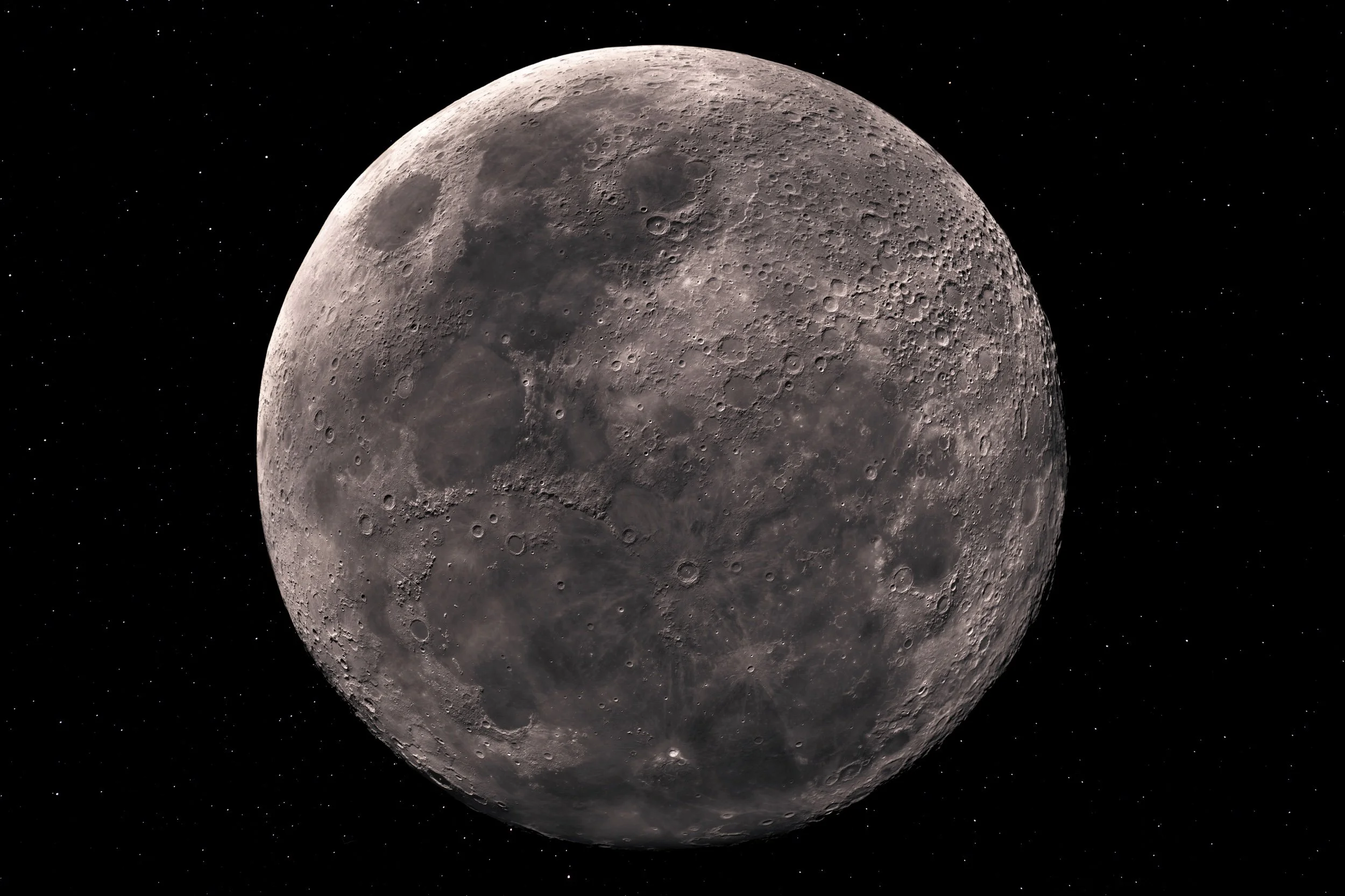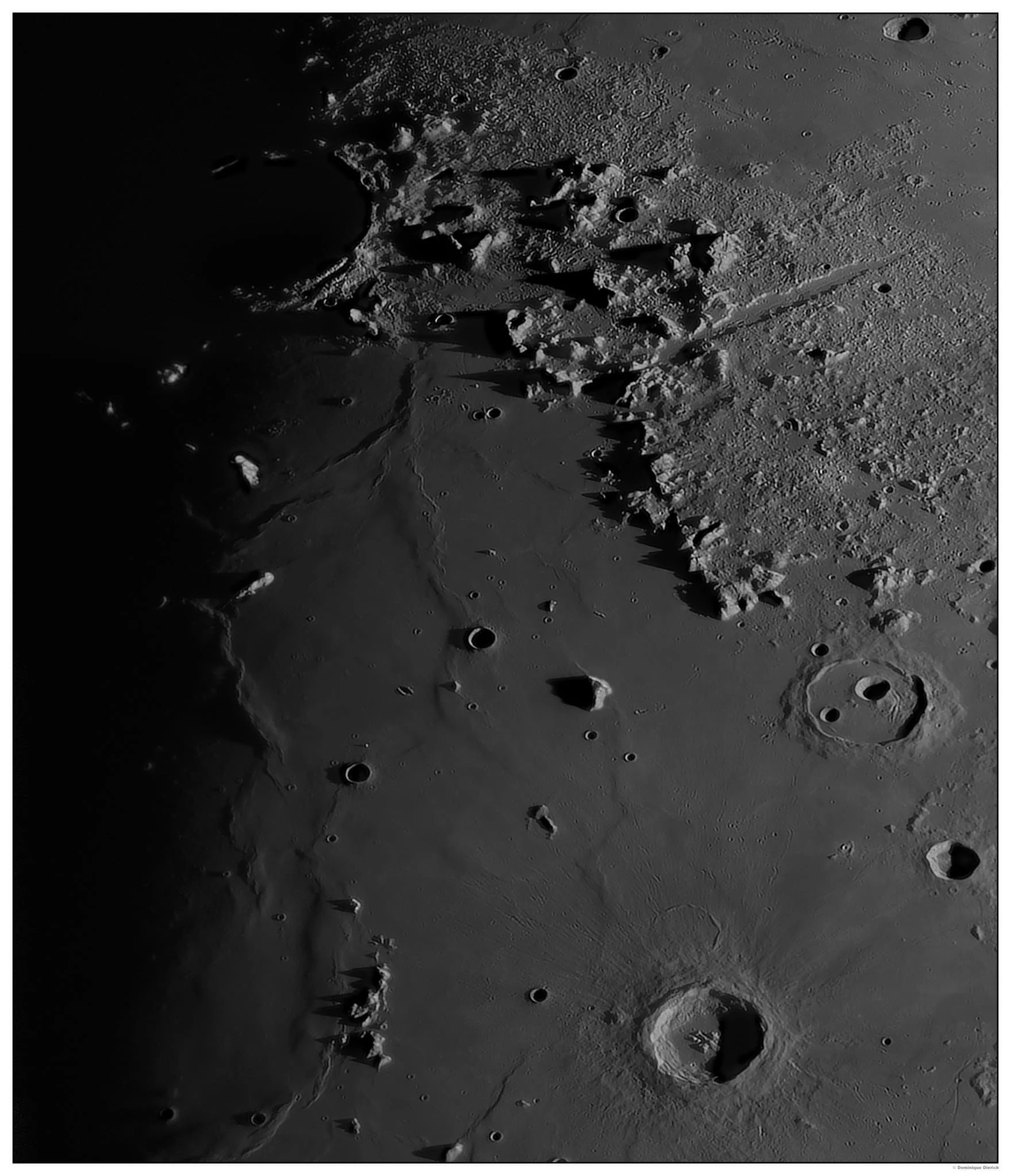
AAPOD2 Image Archives
lunar surface
Featured Astrophotographer on AAPOD2
Vallis Inguirami
Image Description and Details : Vallis Inghirami
Inghirami (91km) and Vallis Inghirami (145km), can only be well observed in favorable librations of west longitude. In this particular photo, the libration was 6.56º.
The crater and vallis appear to have suffered a landslide. Online reading reveals that this surface was formed by the molten material ejected from the Mare Orientale formation. The molten ejecta exploded in the Inghirami Valley and splashed onto the crater floor and then solidified.
Note that the terraces at Vallis, reminiscent of glacial crevasses, are aligned with gradient and sloping flow, implying that they were formed in a liquid state. Second, the crater ruptured in two places in the northwest, carrying the flow of ejecta that covered the crater floor.
Also Vallis Inguirami is on the famous Lunar 100 list created by my friend Chuck Woods with the number 97.
Almost all telescope users are familiar with French comet hunter Charles Messier's catalog of diffuse objects. Messier's 18th-century listing of 109 galaxies, clusters, and nebulae contains some of the largest, brightest, and most interesting deep-sky treasures visible from the Northern Hemisphere. It's no wonder that observing all M objects is considered a virtual rite of passage for amateur astronomers.
But the night sky offers an object bigger, brighter and more visually captivating than anything on Messier's list: the Moon. However, many backyard astronomers never go beyond the astro-tourism stage to acquire the knowledge and understanding necessary to truly appreciate what they are seeing, and how magnificent and amazing it really is. Perhaps that's because after identifying some of the moon's most visible features, many hobbyists don't know where to look next.
The Lunar 100 list is an attempt to provide Moon lovers with something similar to what deep sky observers enjoy with the Messier catalogue: a selection of telescopic sights to spark interest and improve understanding. It features a selection of the 100 most interesting regions, craters, basins, mountains, channels and domes on the Moon. It is a challenge for observers to find and observe them all and, more importantly, to consider what each feature tells us about lunar and Earth history.
Lunar Anatomy 100
Objects in Lunar 100 are arranged from easiest to view to most difficult. This is more systematic than the random approach that produced the Messier list. In fact, just knowing the Lunar 100 number of a feature gives you an idea of how easy or challenging it will be to see. For example, the Moon itself is L1, while L2 is the cinereous light and L3 is the light/dark dichotomy between the lunar highlands and maria ("seas"). I'd be surprised if anyone reading this couldn't tick those off the list right now. Objects with higher numbers are smaller, less visible, or positioned closer to limbo, making them more difficult to locate and visualize.
I invite you to use Lunar 100 to guide your explorations of the Moon (https://en.wikipedia.org/wiki/Lunar_100).
Source: Refreshing Views Observatory, Marc Radice / Lunar 100, Chuck Woods, Sky & Telescope, GarySeronik / Wikipedia
Adaptation: Avani Soares
Copyright: Astroavani
Is this close enough for you?
Image Description and Details : This ultra high resolution of the full moon was constructed using a total of 1530 individual photos captured during all consecutive phases of the moon from new moon to full. The resulting single image measures a whopping 165,000 megapixels, (50,000 x 33.000 pixels).
The assembly of the final images took over 300 hours to stitch together to piece together this one single image.
Imaged from Perth, Western Australia using ...
Skywatcher 12@ Dobsonian Goto Telescope
2x Barlow lens
ZWOasi 183mc Camera
A video presentation with description of several major craters can be found on the above link.
Copyright:: David Gray
Plato and the lunar Alps
Another sunrise, this time over Plato and the lunar Alps. Mewlon 250CRS, 1.8x barlow, ASI290MM camera.
Another sunrise, this time above Crater Plato and the moon Alps . Mewlon 250CRS, 1.8xbarlow, ASI290MM camera .
Copyright: Dominique Dierick




